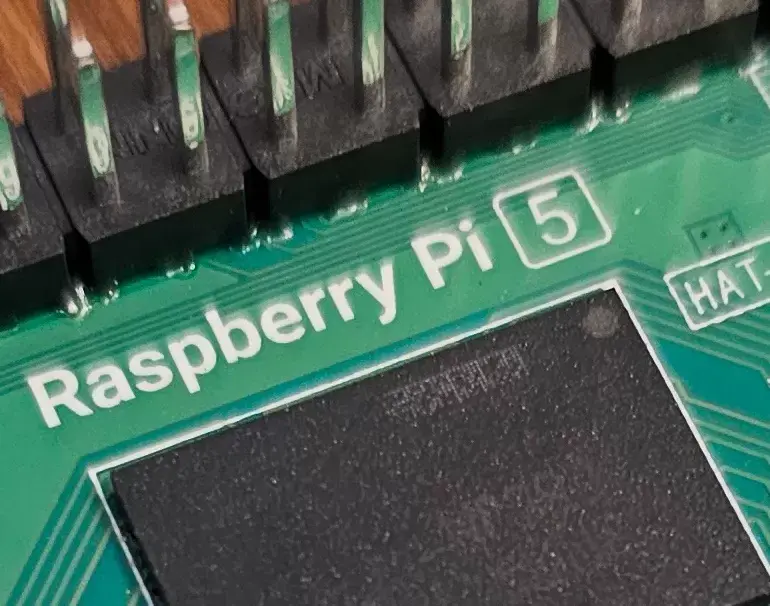Four years after the Raspberry Pi 4 shipped, today the Raspberry Pi 5 is launching with a much improved SoC leading to significant performance gains.
The Raspberry Pi 5 is designed to deliver a 2~3x performance improvement over the Raspberry Pi 4. The Raspberry Pi 5 features a quad-core Cortex-A76 processor that clocks up to 2.4GHz, compared to the four Cortex-A72 cores found in the Raspberry Pi 4 that only clocked up to 1.8GHz. The graphics are also much-improved with now having an 800MHz VideoCore VII graphics processor over the VideoCore VI graphics with the Raspberry Pi 4. The Raspberry Pi 5 is capable of driving two 4K @ 60Hz displays and features 4K @ 60 HEVC decode hardware capabilities.
Also interesting with the Raspberry Pi 5 is that it features in-house silicon in the form of the RP1 “southbridge” used for much of the board’s I/O capabilities. This southbridge should yield faster USB I/O along with other I/O bandwidth upgrades like a doubling of the peak SD card performance. The Raspberry Pi 5 also features a single-lane PCI Express 2.0 interface for improved connectivity.



This is the best summary I could come up with:
After a difficult few years of global supply chain woes leading to limited available and heightened retail pricing on the Raspberry Pi single board computers, today there is finally an update to the family.
Also interesting with the Raspberry Pi 5 is that it features in-house silicon in the form of the RP1 “southbridge” used for much of the board’s I/O capabilities.
This southbridge should yield faster USB I/O along with other I/O bandwidth upgrades like a doubling of the peak SD card performance.
The Raspberry Pi 5 also features a single-lane PCI Express 2.0 interface for improved connectivity.
The Raspberry Pi 5 also features 802.11ac WiFi, Bluetooth 5.0 / BLE, the usual microSD card slot.
The Raspberry Pi 5 features two USB 3.0 ports, two USB 2.0 ports, Gigabit Ethernet, 2 x 4-lane MIPI transcievers, PCIe 2.0 x1 via a M.2 HAT or other adapter, 5V DC power via USB-C, the classic Raspberry Pi 40-pin GPIO header, and the two micro HDMI outputs.
The original article contains 360 words, the summary contains 164 words. Saved 54%. I’m a bot and I’m open source!